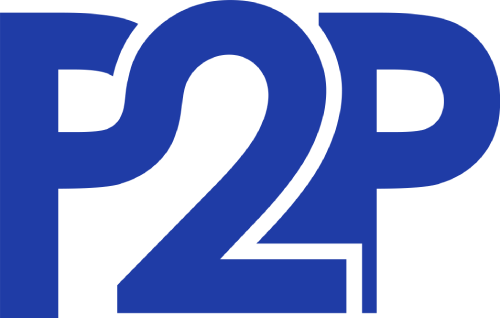 Statement of Work (SOW) serves as a comprehensive description of the Project Requirements. It covers diverse aspects of the project including scope, objectives, features/functionality (product requirements), testing requirements, communication (frequency, method, status reporting), standing meetings, shared documents, processes, and likely more areas depending on the size and complexity of the work.
Statement of Work (SOW) serves as a comprehensive description of the Project Requirements. It covers diverse aspects of the project including scope, objectives, features/functionality (product requirements), testing requirements, communication (frequency, method, status reporting), standing meetings, shared documents, processes, and likely more areas depending on the size and complexity of the work.
It is important to highlight that, for smaller projects, you can collaborate with your selected outsourcing company to refine the SOW to include major milestones, deliverables, resourcing, payment terms, various processes, and confidentiality requirements, and use it as the formal agreement between your organization and the service company. However, for more complex and larger projects, the SOW may be integrated into a separate Service Level Agreement (SLA).
What should be covered in a SOW?
A Statement of Work outlines the specific tasks, deliverables, timeline, processes, and other details for a project (or service). Here's a comprehensive outline you can use as a starting point and tailor to your specific project.
- Introduction
- Project overview and the overall objectives of the project
- Relevant background information about the project
- Parties involved (client and service provider) and key contacts for each side
- Scope of Work
- Detailed description of the project (including product requirements)
- Project assumptions and constraints
- Inclusions and exclusions (clearly define what is and isn't covered by the SOW)
- Specific outcomes the project aims to achieve.
- Deliverables & timeline

- Target start and end dates for the project
- Major milestones and corresponding due dates
- List of specific deliverables to be produced for each milestone
- Clear description of each deliverable
- Estimated timeline for each deliverable
- Dependencies and critical paths
- Expected format or specifications for each deliverable
- Roles and responsibilities
- Responsibilities of the Client (obligations and roles)
- Responsibilities of the Service Provider
- Roles of any third parties or stakeholders
- Points of contact for communication (who should be contacted for various matters)
- Resources and materials
- List of resources needed for the project
- List of required equipment, tools, software, other material
- Resource allocation and management (explain how resources will be allocated and managed)
- Quality assurance
- Quality standards for deliverables (expected level of quality for each deliverable)
- Quality control processes (how quality will be ensured)
- Acceptance criteria for deliverables
- Testing and review procedures (how testing and reviews will be conducted)
This section should cover the requirements for the following areas as appropriate (not all may be applicable):
- Functional testing
- System level testing
- Usability testing
- Scalability testing
- Stress testing
- Performance testing
- Regression testing
- Acceptance testing
- Process management
- Review and approval processes
- Regular standing project meetings
- Documentation (including shared documents)
- Change management
- Process for handling changes or revisions
- Change request procedure (how change requests will be submitted, evaluated and approved)
- How changes will be documented and communicated
- Risk management
- List of potential risks that could affect the project
- Risk assessment and impact analysis
- Mitigation strategies and contingency plans
- Communication plan
- Communication channels and frequency (weekly meetings, ad hoc and urgent meetings)
- Communication tools (email, text, shared documents, collaboration tools like Slack)
- Escalation procedures for issues (how issues will be escalated and resolved)
- Payment terms
- Payment schedule and milestones (when and how payments will be made)
- Payment terms and conditions
- Method of payment
- Intellectual property
- Intellectual property rights and ownership (define ownership of project deliverables)
- Handling of confidential information (during project and post completion)
- Confidentiality and non-disclosure agreements (specify confidentiality requirements)
- How to ensure compliance with legal and regulatory standards
- Termination and exit strategy
- Conditions under which the project can be terminated
- Procedure for transitioning or wrapping up the project
- Conditions for project termination (circumstances under which the project could end prematurely)
- Process for transitioning or ending the project (how project transition or closure will occur)
- Data handover and knowledge transfer to Client
- Appendices
- Any additional supporting documents, references, or agreements
- Product or service requirements
- Contracts, legal requirements, etc.
Why SOW matters
The SOW is utilized to support the following key tasks. Given the evident nature of these tasks, we are refraining from explaining them in detail to maintain the brevity of this mini blog.
- Evaluation and selection of an outsourcing partner – Project managers must thoroughly assess if the outsourcing companies have the necessary expertise and capabilities to successfully implement the product and meet project requirements.
- Time and cost estimates
- Major project milestones and deliverables (overall schedule)
- Product design and implementation
- Acceptance test plans – Verifying the completion of a deliverable from the outsourcing company. Generally, successful completion of deliverables is tied to the payment schedule.
- Requirements for various test plans (Functional testing, usability testing, scalability testing, etc.)
- Product support and maintenance
As you can imagine, a high-quality and robust product requirements document and a well-developed SOW are critical for ensuring the reliable completion of all the tasks mentioned above.
One last point
You don't need to have a complete Statement of Work (SOW) before engaging with service providers. What you do need, however, are the 'assessment sections' (sections 1-5) so that you can effectively interview and evaluate service providers. You can continue working on the 'process sections' (sections 6-13), which detail how you will collaborate with the service provider and outline expectations.

